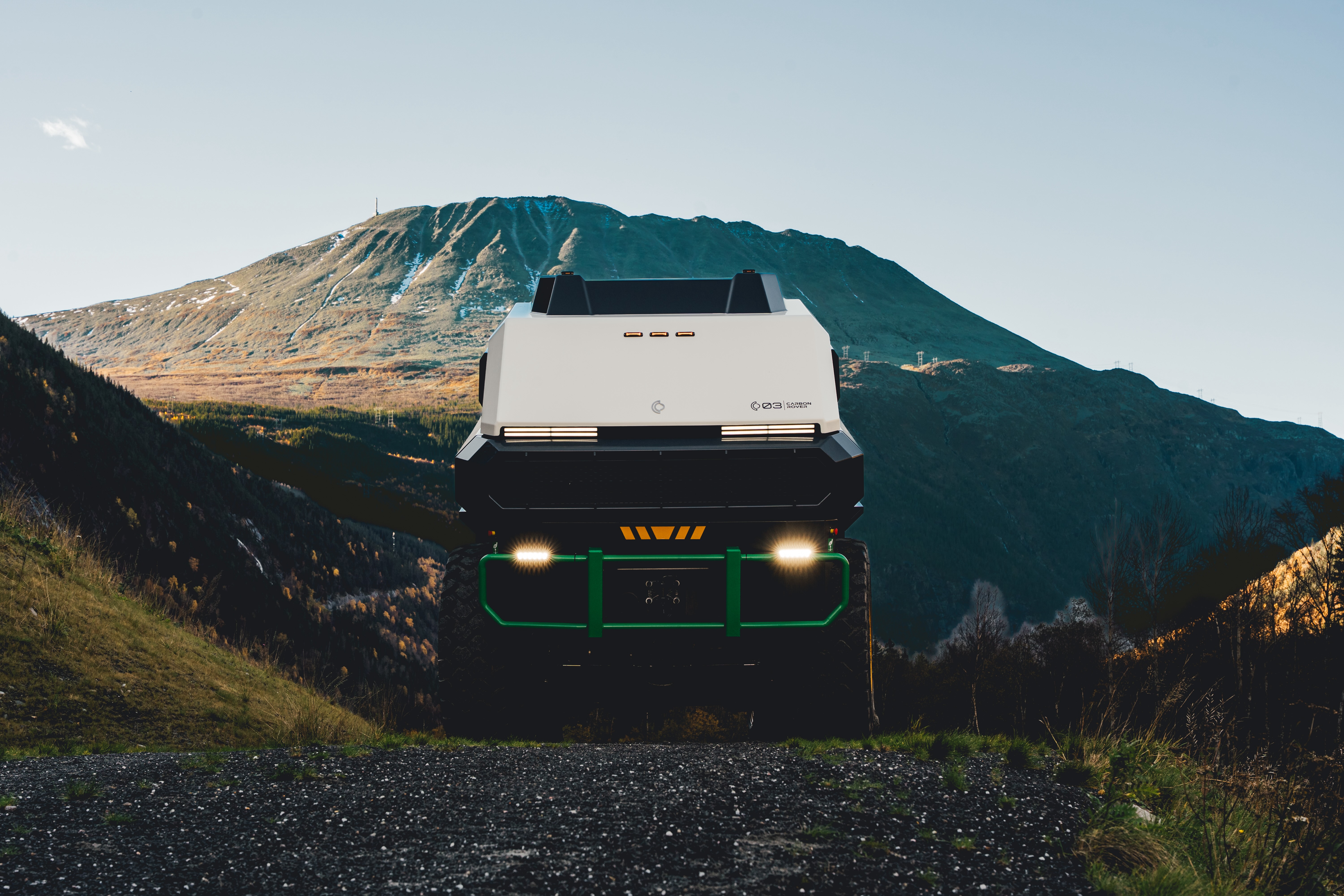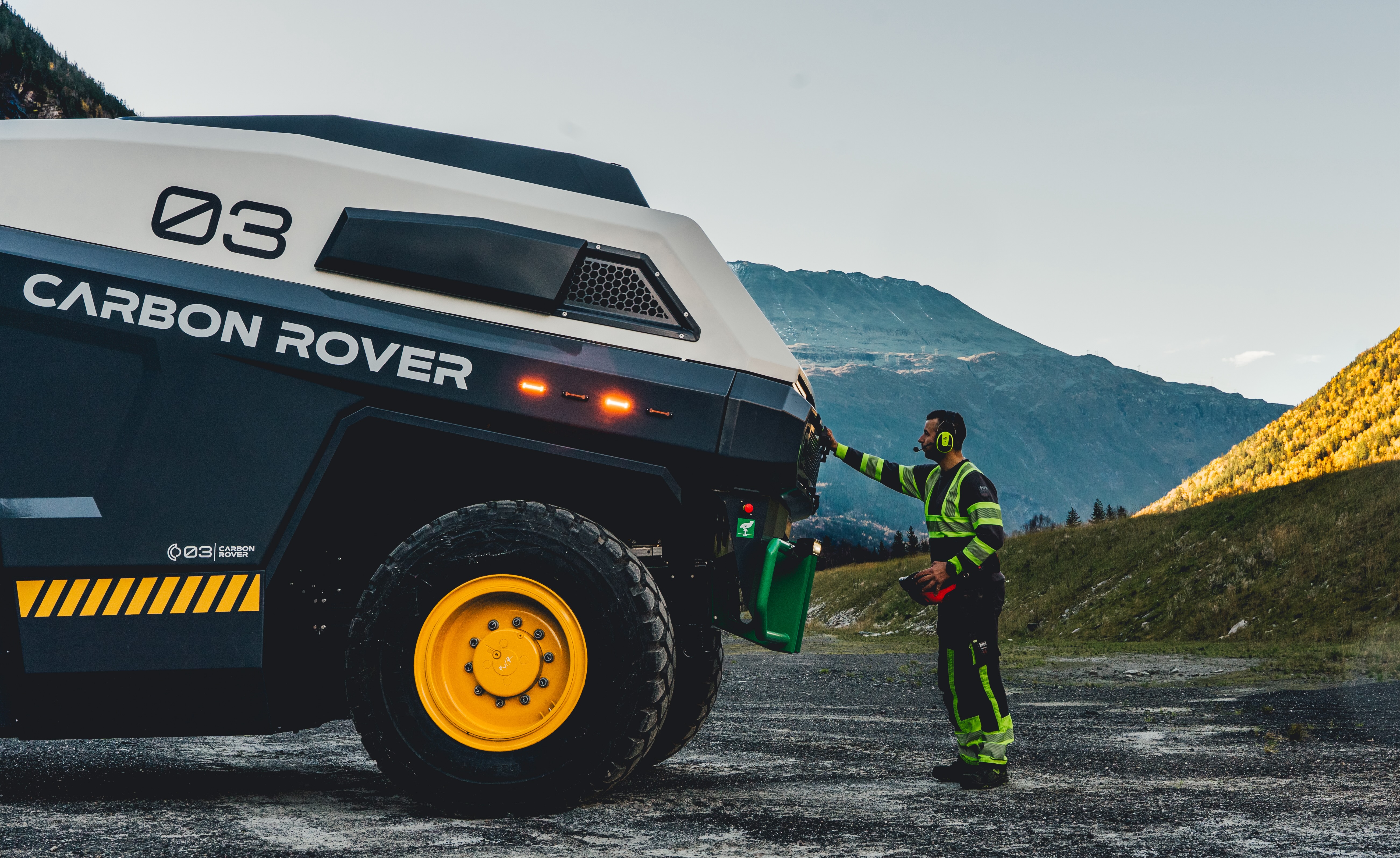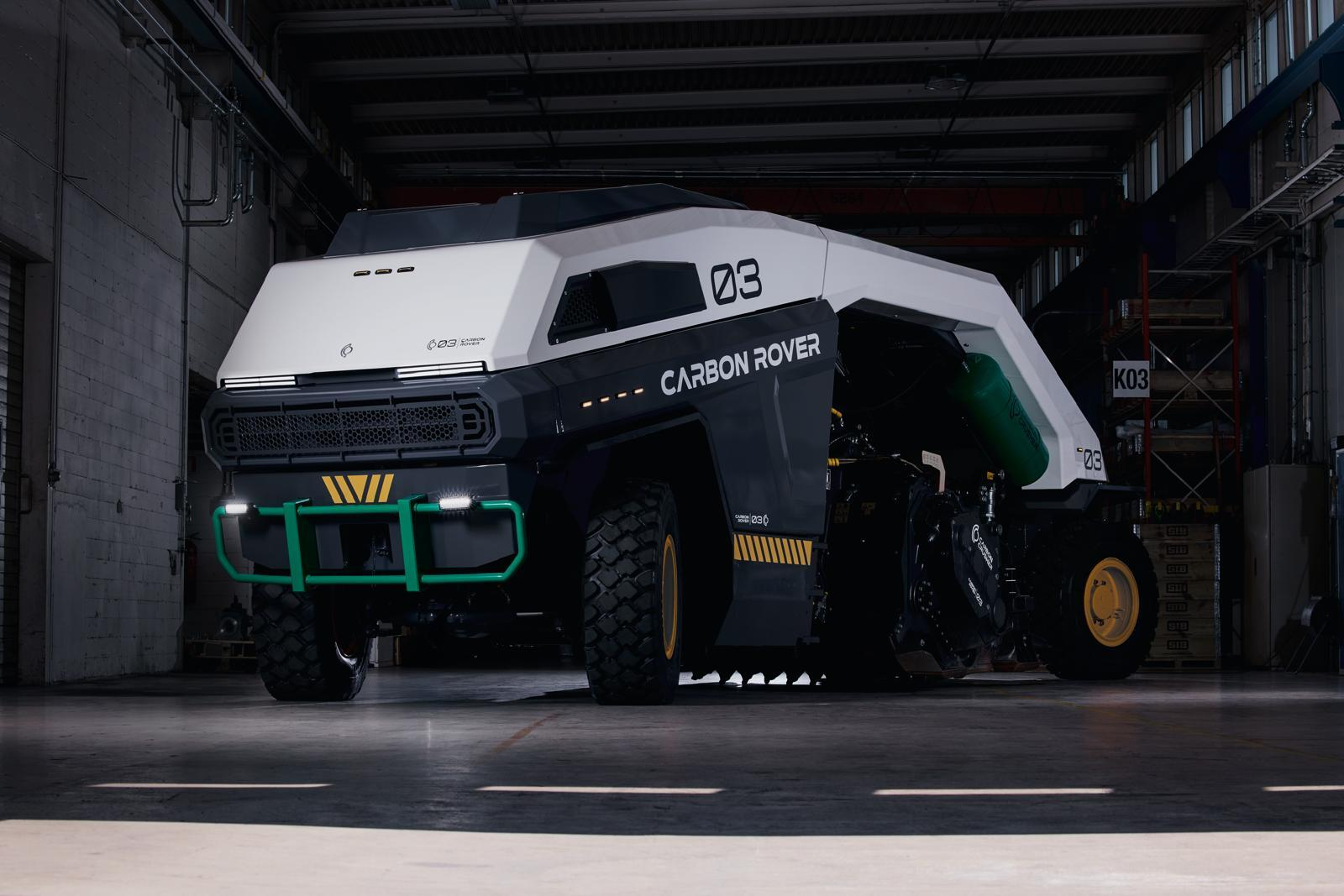A Carbon Hero Emerges
01
Three years ago, it was just a sketch. A wild idea. A machine inspired not by highways, but by the harshest terrain imaginable — Mars.

Today, that idea has become reality. Carbon Crusher has launched the Carbon Rover: a next-generation road recycling machine that not only rehabilitates failing infrastructure but also removes carbon dioxide from the atmosphere in the process, using bio polymers from trees.
Powered by the company’s SkyRoads AI platform for autonomous operation and carbon measurement, the Carbon Rover can regenerate damaged roads anywhere — from Arctic ice to desert heat — while locking away up to 630 tons of CO₂ per mile.
Yes, you read that right. This rugged Nordic machine doesn’t just fix roads — it heals the planet.
Built Like a Mars Rover. Designed to Save Earth.
“Our vision was to build something that could function under Martian conditions,” says Carbon Crusher co-founder Kristoffer Roil, standing beside the towering new Rover. “And if it can work on Mars, it sure as hell can work on a rural road in Arizona or a frost-shattered lane in Norway.”
That same engineering mindset — durable, autonomous, and radically efficient — powers the Carbon Rover’s mission on Earth. But instead of scanning red rock for signs of life, it’s crushing old asphalt and injecting a carbon-negative biobinder made from modified lignin — a natural byproduct of wood pulping — into the reclaimed roadbed.

From the North Sea to the Climate Frontier
Norway once led the fossil fuel frontier, extracting oil and gas from the frigid North Sea. Now, a new generation of Norwegian engineers is flipping the script — using those same pioneering instincts to decarbonize one of humanity’s most carbon-intensive infrastructures: our roads.
The Carbon Rover is their new flagship. A “Carbon Hero,” as the team calls it — and not without reason.
Scaling a Planet-Sized Solution
Roads cover more than 64 million kilometers across the globe — a surface area nearly 15 times the size of Germany. Even repurposing just 1% of the world’s roads using Carbon Crusher’s method would sequester roughly 230 million tons of CO₂ — equal to removing 50 million fossil-fueled cars from the road, according to the U.S. Environmental Protection Agency’s emissions benchmark.

To help visualize it, imagine this: You’re walking a two-lane road paved with Carbon Crusher’s method. For every 200 steps, you’ve locked away the equivalent of a tree’s entire year of carbon absorption — not in the forest, but under your feet.That’s the kind of poetic inversion that makes climate innovation feel personal. Tangible. Roads you can believe in.
Beyond Greenwashing: A Full-Cycle Reinvention
Carbon Crusher isn’t just repainting the problem green. Backed by extensive research partnerships with institutions like RISE PFI and LignoCity, they’ve tackled the real-world limitations of bio-based binders: curing time, water resistance, and scalability.
This is not just a lab story. Carbon Crusher is already operating in the U.S., Scandinavia, Southern Europe and even west Africa. Governments, municipalities, and climate-forward construction companies are taking notice.
Infrastructure As Climate Tech
“One of the largest climate solutions is not unproven experimental technology — it sits right under our tires,” says Haakon Brunell, CEO at Carbon Crusher. “We see roads as the largest untapped carbon sink in our society. And the Carbon Rover is our tool to unlock it.”
It’s a bold claim. But it’s not without teeth. Especially when the road to a climate-resilient future might actually be the road itself.
Any questions?
Leave your question here and one of us will contact you shortly.
More Articles
.jpeg)
